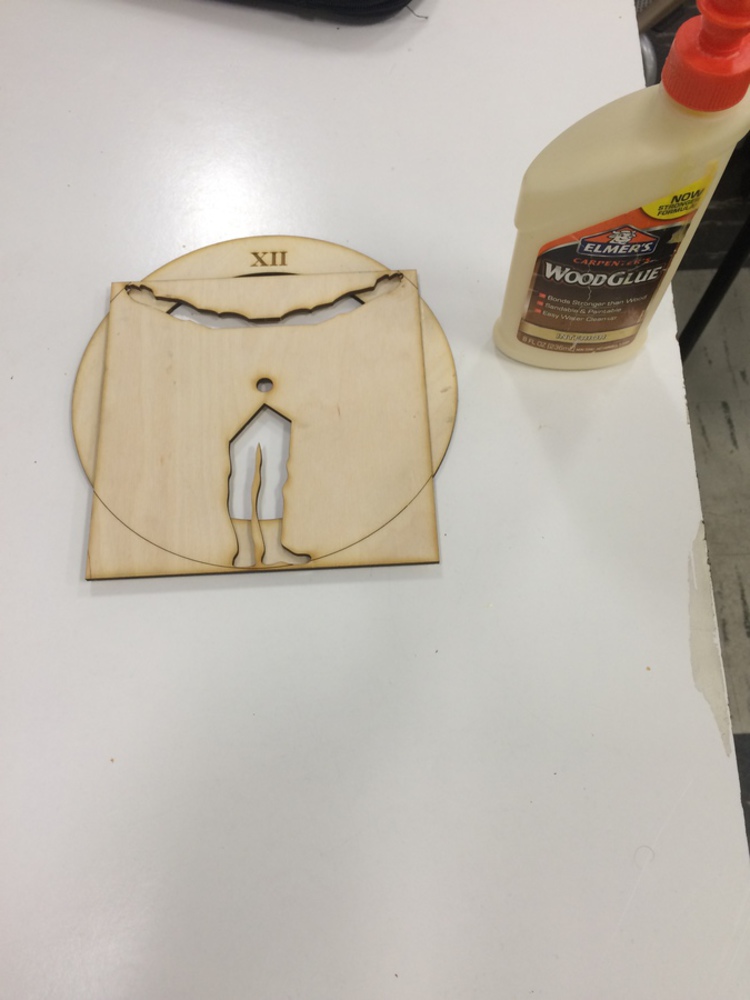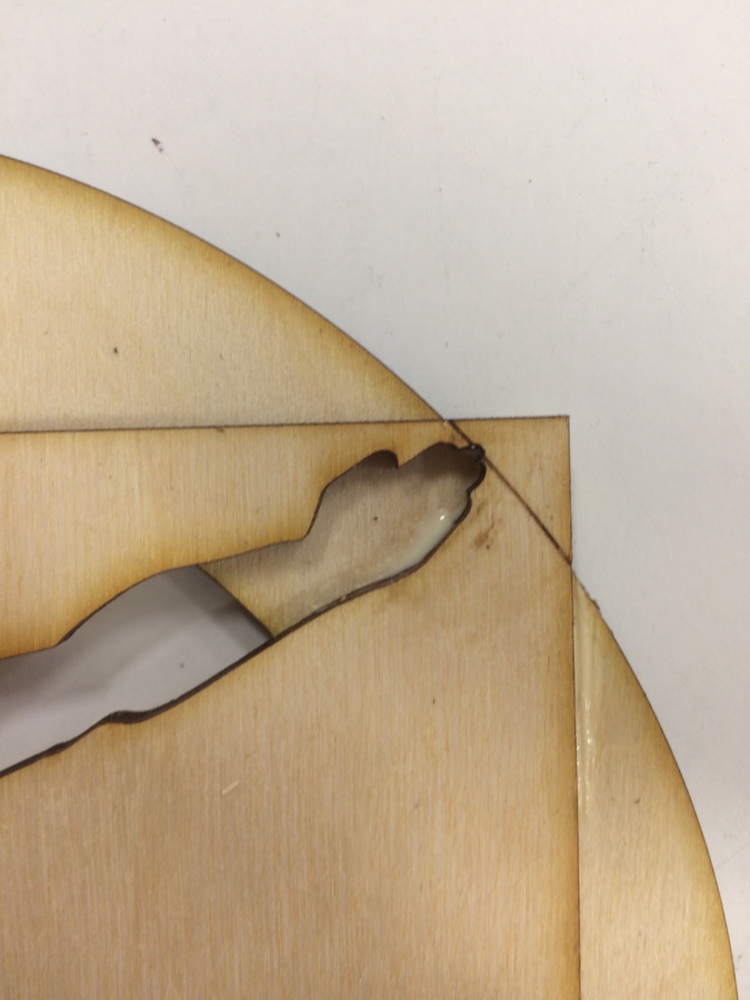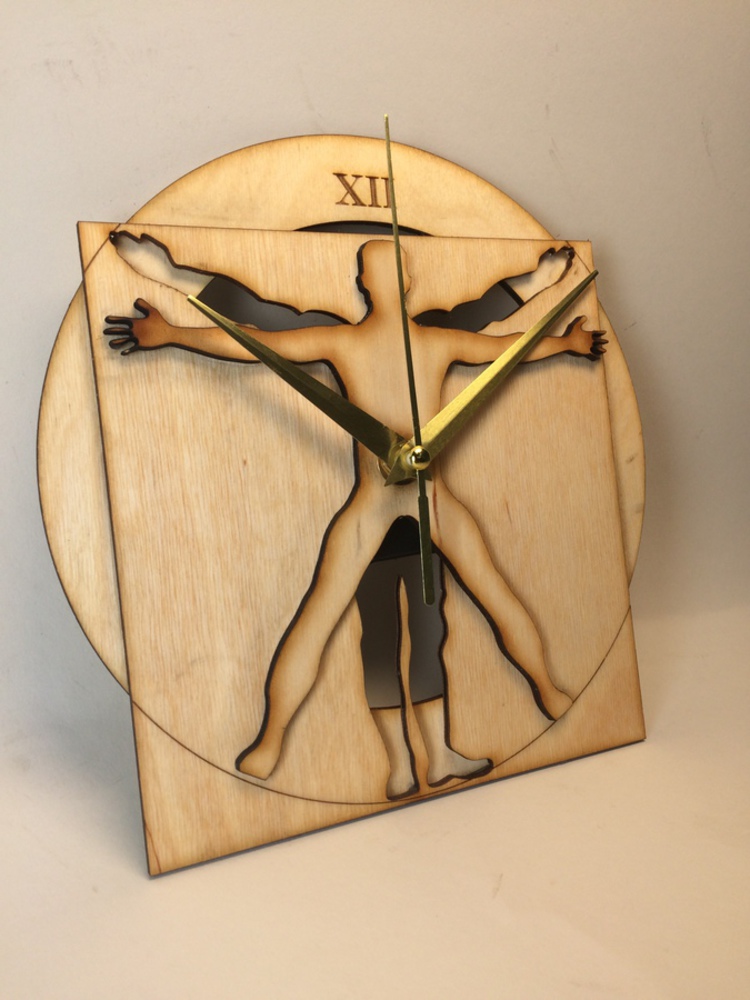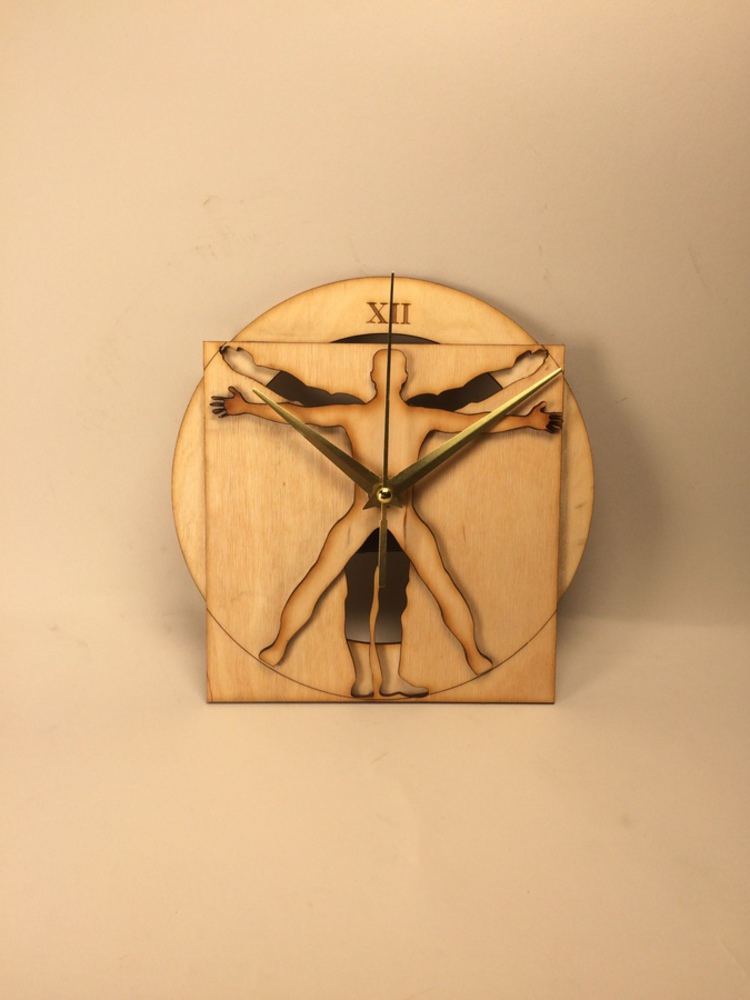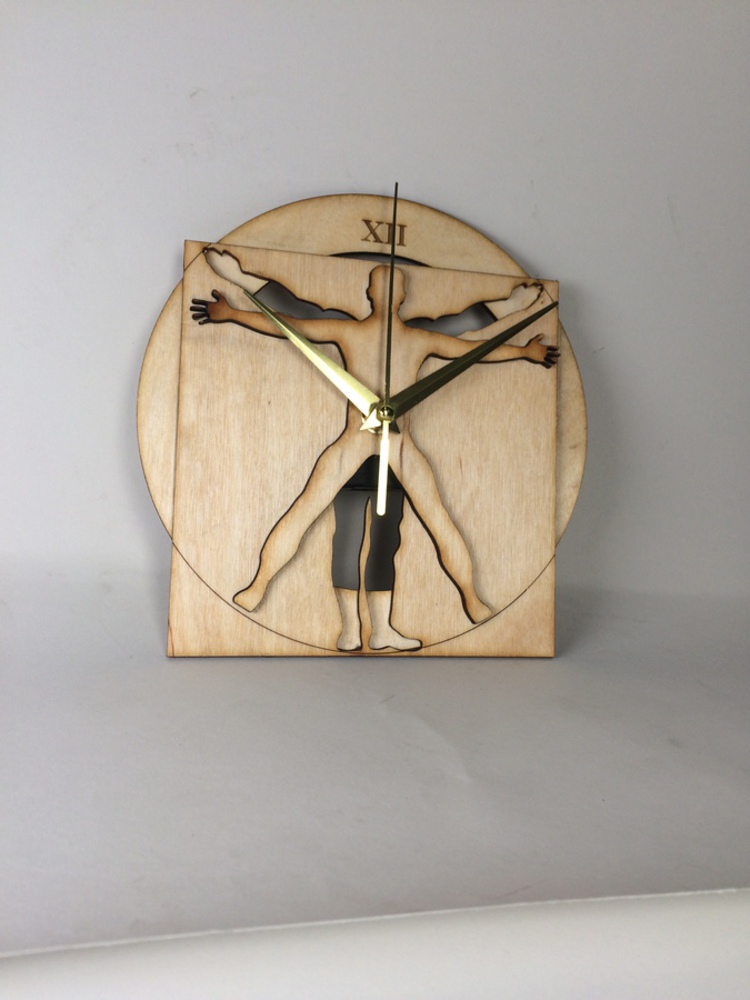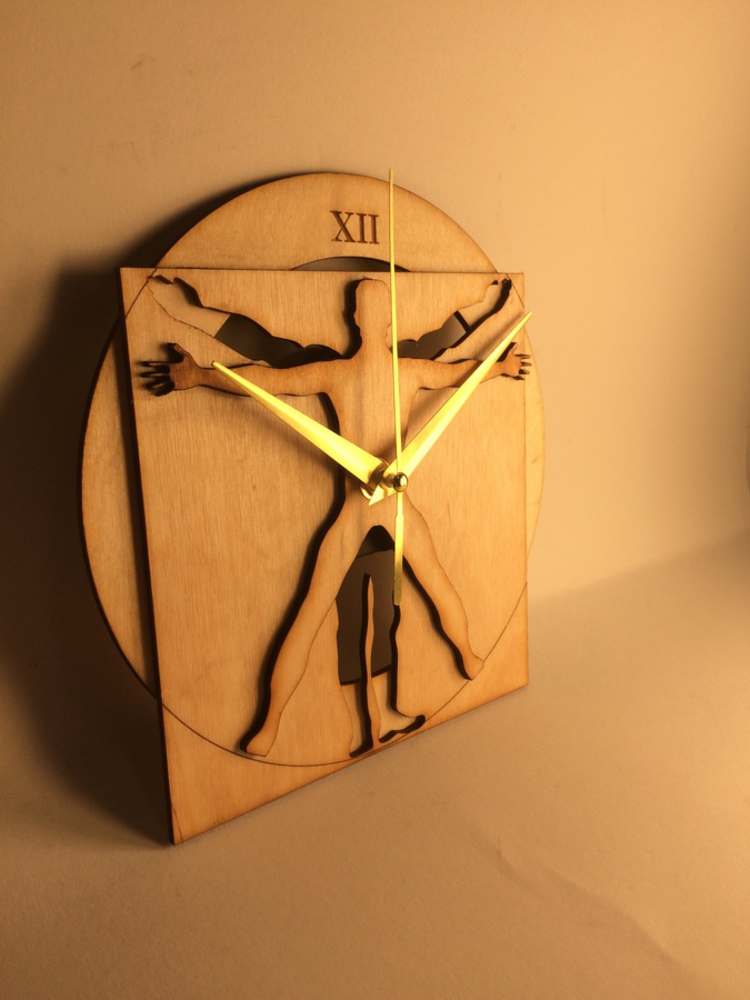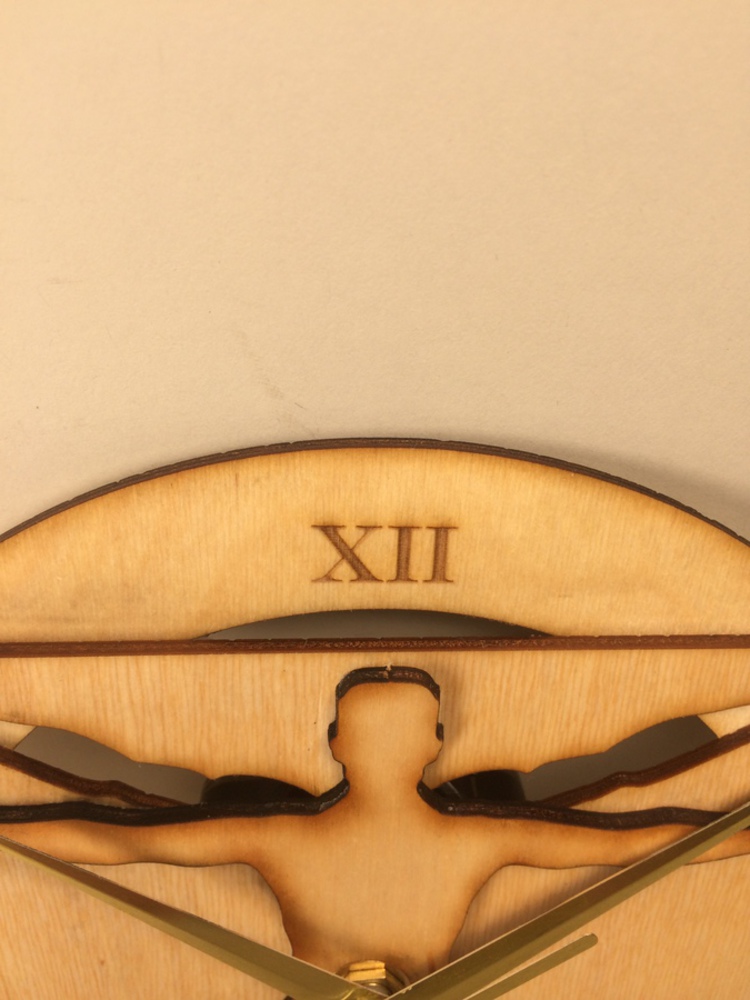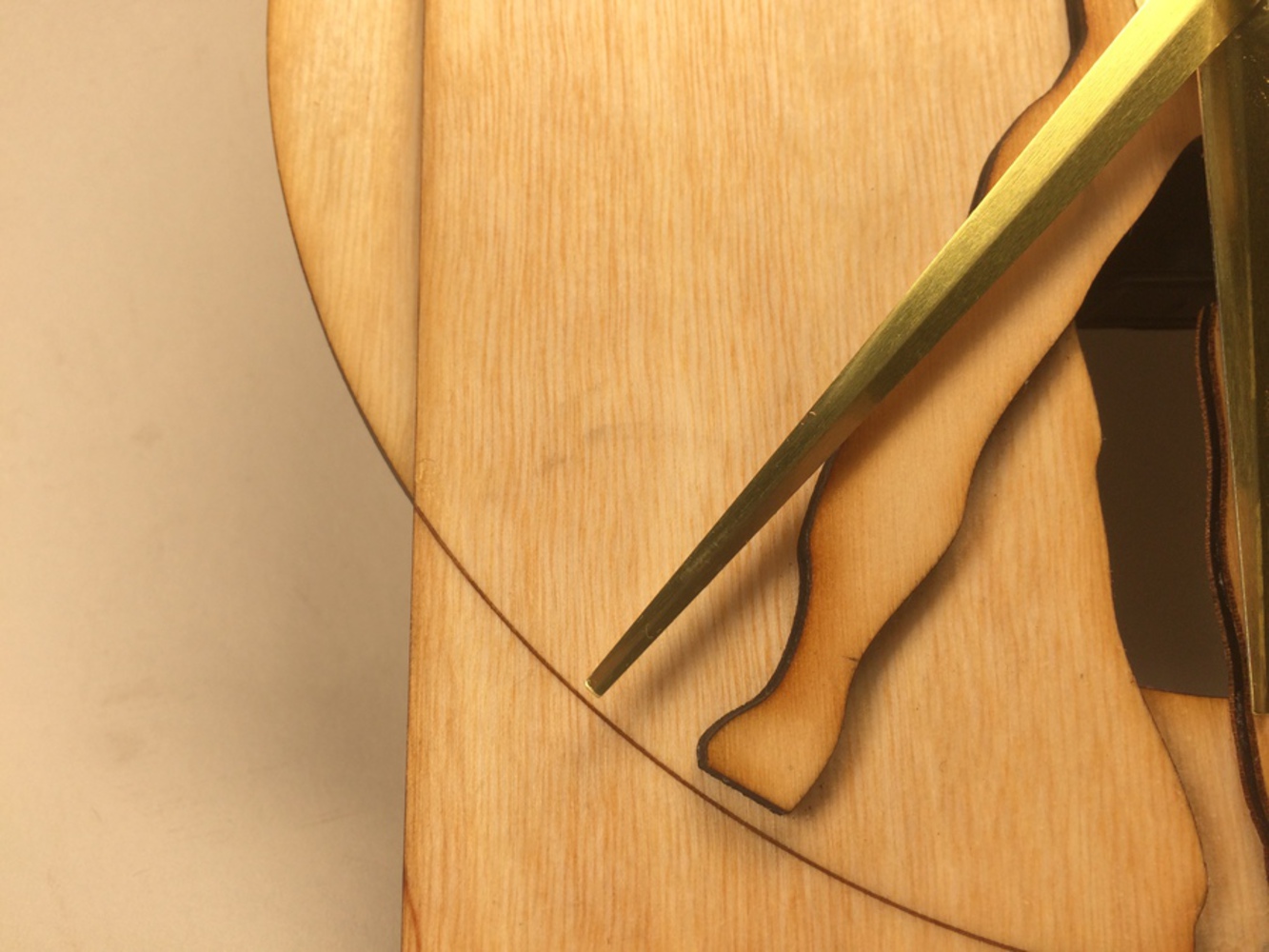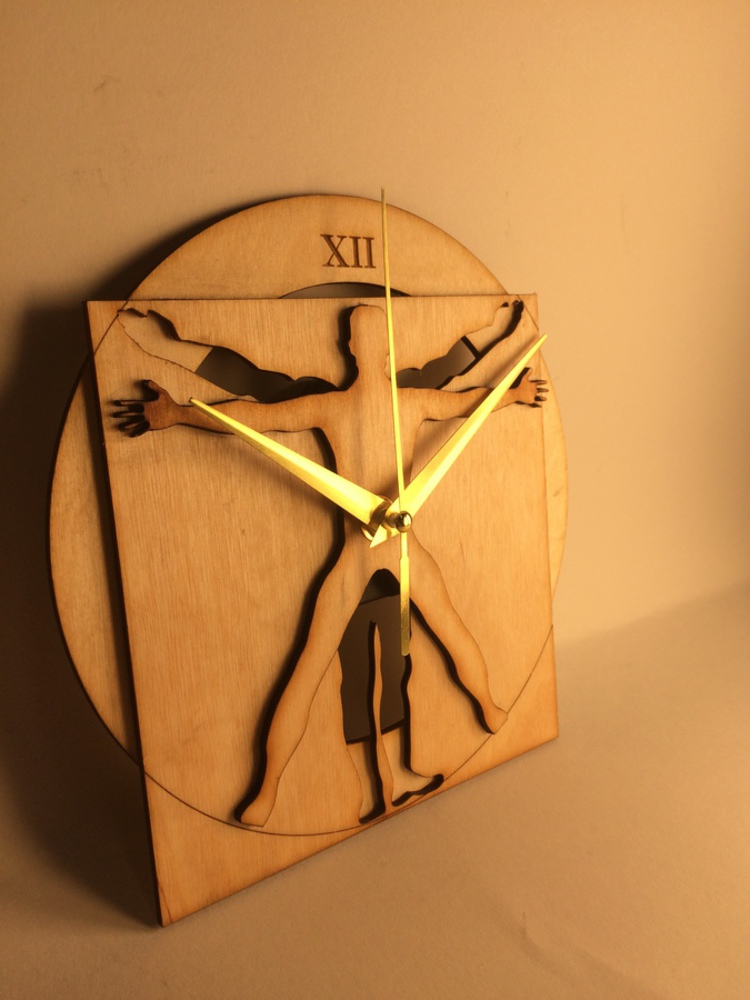Process
Deciding to create the clock face out of multiple layers presented the problem what to put on each layer. I decided that the two figures should be on different layers, which led to the decision to make the bottom figure a negative image, cut from the rectangle. I decided to turn the circle into a ring with the radii of the minute and hour hands. When drawn like this, the circle extends above the figures and square making a space for an hour marking. Other minute or hour markers could be placed on this ring, but I chose to keep the design clean and minimalist to not distract from the figures in the middle.
I created the sketches for each layer by tracing an image of the work in Fusion 360. I took advantage of the symmetry by mirroring some of the body parts over the centerline, and used projections to easily mark where the square layer overlapped the circle layer for scoring.
